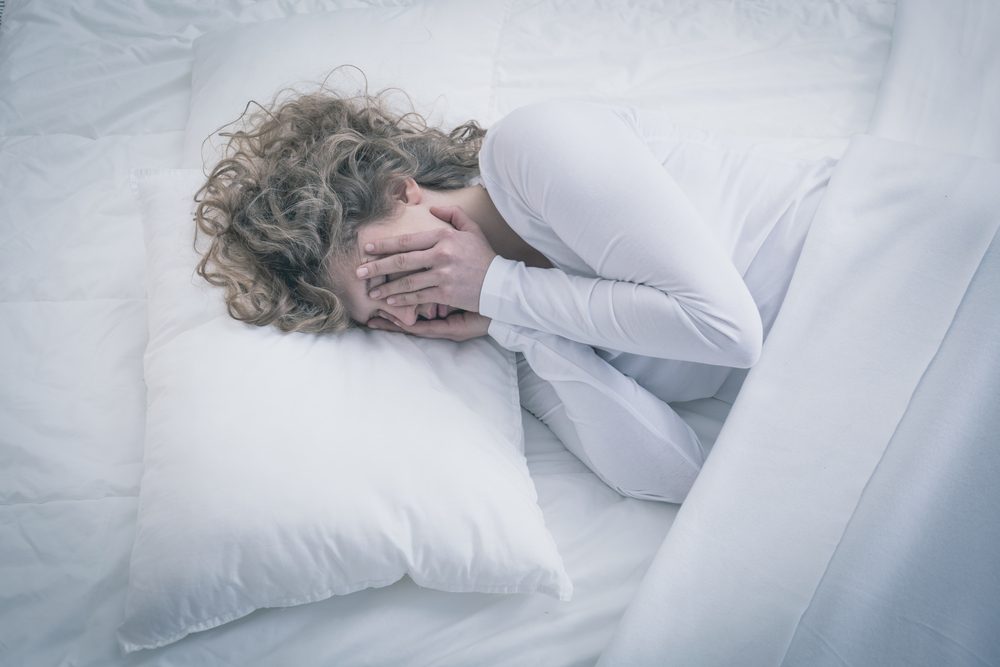How My Sister and I Are Facing the Parkinson’s Fatigue Dilemma

Photographee.eu/Shutterstock
When my older sister, Bev, who was diagnosed with Parkinson’s disease in 2019, visited me last winter to escape Ohio’s frigid temps and snow, and to receive some dental work in sunny Arizona where I live, I noticed some definite changes in her.
She is now 83 and at stage three of Parkinson’s disease (PD). I noticed that she was sleeping in more — most mornings until 10 a.m. — she wasn’t very motivated, and as the day progressed, she seemed less able physically and mentally. Although previously she never had experienced rigidity or much tremor, except for her neck and head, I noticed that she had more difficulty with balance and memory, and increased slowness of movement. Factors such as age, gender, and disease progression can affect the level of fatigue in PD.
When I asked her about the fatigue, she said, “I think I could sleep forever. I am always so tired. I can never get enough rest. And I know that I get things mixed up or can’t remember.”
According to the Parkinson’s Foundation, about half of those with Parkinson’s report fatigue as a major problem that sometimes can be disabling. And there is a difference between just being tired and unrelenting fatigue.
I knew that given my sister’s sleep pattern, she seemed to be getting enough sleep, although there were disruptions. Bev also was taking an antidepressant and didn’t feel depressed. The dosage of her PD medication had been decreased, so neither of those seemed to be affecting her fatigue.
I suggested we face the fatigue dilemma full steam ahead. She and I discussed — with humor and sarcasm about her being the older sister — what she thought would help her to feel less fatigue, both physically and mentally.
We both hope that sharing the following tips will help other people with PD and their caregivers face the PD fatigue dilemma.
When left to her own decisions regarding nutrition, Bev’s menu was either bologna sandwiches or hot dogs. So, I cooked some healthier meals that she inhaled. Nutrition is important for increasing energy — basic stuff, right?
She also enrolled in a PD exercise and balance class, as well as a falls prevention program at her local community center to help defeat the low-energy dilemma. I also suggested that she try to avoid naps after 2 p.m., and any naps that she did take should be short. She agreed to do more in the mornings when she felt at her peak instead of doing errands later in the day.
To date, Bev still struggles with PD fatigue, but says that the exercise and balance class helps with her energy level.
There is no definitive cause for the fatigue associated with PD. According to the American Parkinson Disease Association, “It is likely a combination of interacting causes, only some of which we understand and can modify.”
For example, medications taken for Parkinson’s motor symptoms may worsen fatigue. Being in overall poor physical health or living with other health conditions can also affect one’s degree of fatigue. Because of the overlap between fatigue and depression and sleep disorders, treating the latter conditions, which can present with Parkinson’s, may be helpful in combating fatigue.
A study published in the journal NeuroImage: Clinical and shared by ScienceDirect found that fatigue in Parkinson’s has also been linked to specific patterns of brain degeneration. These structural changes aren’t present in individuals of the same age who don’t have the condition.
As her sister, I know that Bev gets frustrated with her decreasing ability to move as quickly as she wants, her cognitive changes, and her increasing fatigue. Since PD fatigue can be one of the most frustrating symptoms for both individuals with PD and their caregivers, I hope that future research will focus not only on why fatigue occurs in Parkinson’s but also on new methods or therapies that can help those who face this common challenge.
***
Note: Parkinson’s News Today is strictly a news and information website about the disease. It does not provide medical advice, diagnosis or treatment. This content is not intended to be a substitute for professional medical advice, diagnosis, or treatment. Always seek the advice of your physician or another qualified health provider with any questions you may have regarding a medical condition. Never disregard professional medical advice or delay in seeking it because of something you have read on this website. The opinions expressed in this column are not those of Parkinson’s News Today or its parent company, Bionews, and are intended to spark discussion about issues pertaining to Parkinson’s disease.







Umakant Pancholi
This is a message for Tom about mannitol. Can you please advice as to how you take a table spoon of mannitol and when do you take it. It is very useful product to try out . I have just purchased some but I am not sure of the dosage to take and who to take. Any help will be greatly appreciated
Kind regards
Gwendoline Jakins
The two things that have helped my husband are mannitol and the infrared coronet. He has been taking mannitol (1tbs. a day in coffee) for 18 months. It turned his life around. It improved many of his PD symptoms, but the almost immediate one was his apathy and his energy levels. He had been spending 20 hours a day on the bed doing very little. Now he is exercising, doing crosswords, reading the newspapers, jigsaw puzzles ,going out for dinner with friends. At that time his neurologist was thinking dementia. My husband never sleeps during the day and goes to bed about 11pm. This fact alone has surprised the neurologist. The fact that mannitol has been used in hospitals for brain injuries and surgery seems to have slipped below the radar. It’s not just a diabetic sweetener, which was how I sourced it here in Australia.
We have just started on the infrared coronet and I’ve ordered the theramat to go with it. There was a very interesting report this week on the results of research by the Australasian Research Institute. I’ve read of some very good results also by some members of a PD forum, which is what pointed me in that direction. One can’t always wait for the results of medical research, it’s like watching paint dry.
Rick
"He has been taking mannitol (1tbs. a day in coffee) for 18 months"
Just to be perfectly clear, that's 1 tablespoon right
Charlie Reilly
Fatigue is biggest problem
Dorey Hanna
MUST READ
I was diagnosed with Parkinson’s disease a few years back and I had Encephalitis at age 9. I was diagnosed with Peripheral Neuropathy about four years ago. I read somewhere that WORLD HERBS CLINIC has the best Parkinson's disease HERBAL FORMULA. At first, I don't believe it, But after spending my whole day online, I saw so many good testimonials about them. I purchase 6 bottles of Parkinson’s disease herbal formula in February this year, Three months LATER my symptoms were nowhere to be found. Am so happy to share and all thanks to WORLD HERBS CLINIC doctors.